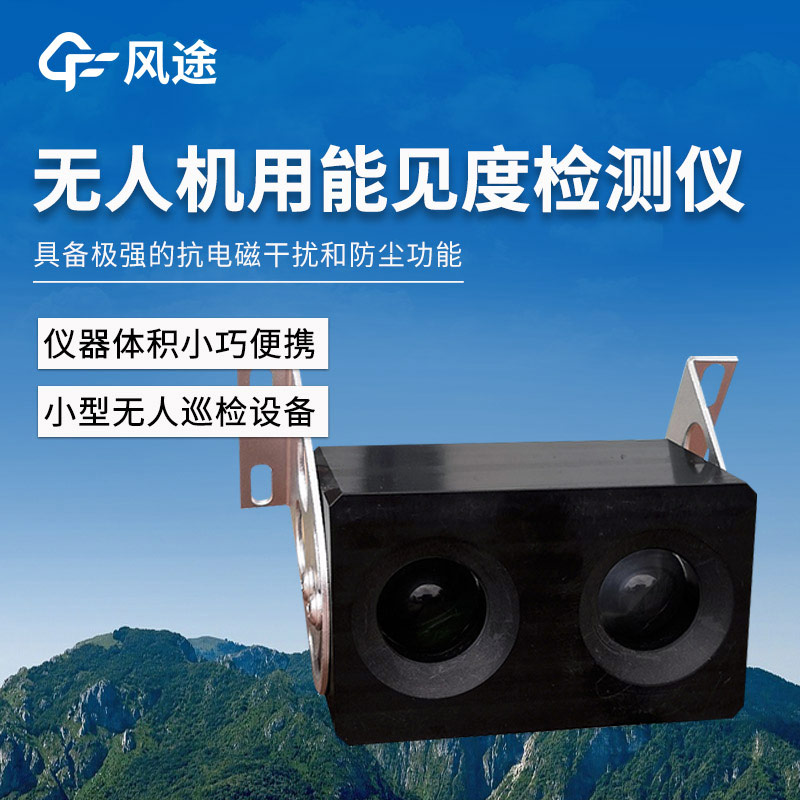Shandong Fengtu IOT Technology Co., Ltd
Sales Manager:Ms. Emily Wang
Cel,Whatsapp,Wechat:+86 15898932201
Email:info@fengtutec.com
Add:No. 155 Optoelectronic Industry Accelerator, Gaoxin District, Weifang, Shandong, China

Sales Manager:Ms. Emily Wang
Cel,Whatsapp,Wechat:+86 15898932201
Email:info@fengtutec.com
Add:No. 155 Optoelectronic Industry Accelerator, Gaoxin District, Weifang, Shandong, China
time:2025-06-17 09:40:52 source:Weather Station viewed:201 time
Low-visibility weather conditions such as fog, haze, precipitation, and sandstorms not only cause great inconvenience to travel but also frequently trigger major accidents, leading to severe casualties and economic losses. However, the existing Doppler weather radars in meteorological and environmental monitoring stations are insufficiently dense, suffering from limited coverage and increased detection errors with distance, failing to meet the needs of fine-scale detection. Radiosondes carried by sounding balloons for fixed-point observation cannot control their positions, have poor reliability, and are difficult to recover with high costs. While ground-based visibility detectors are widely used, high-altitude visibility observation equipment remains scarce. Against this backdrop, Uav visibility meters have been widely adopted, providing a new approach to obtain more comprehensive and accurate visibility data with advantages of flexibility, convenience, and wide coverage. Below are introductions to two Uav visibility meters.
1. FT-WJN6: 6KM Forward Scattering Visibility Detector
Working Principle:
Using the forward scattering method to measure the total extinction coefficient of air and calculate the current visibility. The transmitter employs an infrared LED as the light source, which is pulse-modulated and irradiated onto the sampling space through a lens. Aerosol particles in the sampling space scatter the light, and the amount of scattering is related to the size and concentration of aerosol particles, which in turn correlate with atmospheric visibility. The scattering visibility meter determines the total scattering coefficient by measuring the scattered light intensity at a specific angle and calculates the visibility based on the relationship between this intensity and the total scattering amount.
Performance:
Detection range: 10 to 6,000 meters (maximum detection distance up to 10,000 meters), meeting visibility monitoring needs in different scenarios.
Measurement accuracy: ±10%, accurately reflecting actual visibility.
Operates normally at an altitude of 4,000 meters and -20°C. With a flat shape and low wind resistance, it can be mounted on the aircraft belly. Users can choose ABS or aluminum alloy casing materials and optional temperature-humidity and air pressure sensors.
Power consumption: Only 0.9W, suitable for small UAV platforms to reduce energy consumption and extend flight time.
2. FT-WJN4: 4KM Backward Scattering Visibility Detector
Working Principle:
Based on the backward scattering principle, it measures visibility by precisely detecting changes in atmospheric backward scattering energy and calculating atmospheric visibility values combined with corresponding mathematical models.
Performance:
Weighs only 110g, with dimensions of 94mm×69mm×42mm. Its miniaturized shape, low wind resistance, ultra-light weight, and ultra-low power consumption enable easy integration with small UAV platforms without significantly affecting flight performance or flexibility.
Strong anti-electromagnetic interference and dust-proof capabilities ensure stable operation in harsh environments (altitude 4,000m, -20°C), adapting to various complex climatic conditions and application scenarios.
Supports digital output modes such as RS485, RS232, and SDI12, with optional BLE5.0 Bluetooth output for convenient data communication with UAV flight control systems and other devices, ensuring real-time and efficient data transmission.
Detection range: 10–4,000 meters, covering the visibility range required for general meteorological and environmental monitoring. Measurement accuracy: ±15%, providing reliable data for subsequent decision-making and research.
Uses an IR LED light source with long lifespan, high stability, low energy consumption, and a response time of only 10 seconds, quickly reacting to visibility changes and outputting real-time data.

The deployment and use of greenhouse sensors is a very important and critical part of my country's agricultural production at present. Due to the complex and changeable environmental conditions of the greenhouse, it is necessary to select and arrange reasonably according to different needs in th...
The Clairvoyance water and rain query system is based on the Internet of Things technology, and realizes the function of water resources monitoring and early warning through the processing and analysis of the data acquisition module. The system conducts comprehensive management and data analysis of...
The Agricultural monitoring system is a comprehensive agricultural informatization system integrating the monitoring of crop growth, soil moisture, meteorological conditions, and plant diseases and insect pests. Due to its precise monitoring capabilities, it is vividly known as the "clairvoyant...
Visibility is a crucial factor in our daily lives and the operations of numerous industries. Weather conditions such as heavy fog and sandstorms can significantly reduce visibility, causing serious impacts on transportation and travel, and are highly likely to trigger traffic accidents. In the aviat...